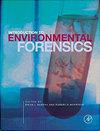印度东北部特里普拉工业化地区水文地球化学、地下水质量和相关健康风险调查
IF 1.2
4区 环境科学与生态学
Q4 ENVIRONMENTAL SCIENCES
引用次数: 26
摘要
本文章由计算机程序翻译,如有差异,请以英文原文为准。
Investigation of the hydrogeochemistry, groundwater quality, and associated health risks in industrialized regions of Tripura, northeast India
Abstract The aim of this study was to elucidate the contaminant sources and the processes controlling the groundwater quality and risk assessment of heavy metals posed on humans by statistical indices. The groundwater sampling was performed at Bodhjungnagar Industrial Estate, A.D. Nagar, Dukli and Badharghat Industrial Cluster, Tripura, India during pre-monsoon and post-monsoon in the year 2017. A total of 21 water quality parameters (Temp, pH, TDS, Ca, Mg, TH, Na, K, HCO3, Cl, SO4, PO4, NO3, F, Fe, Mn, Pb, Cd, As, Cu, Zn, and Cr) were determined from collected samples. The statistical and graphical methods were employed to assess the suitability of water. The water quality index (WQI) suggested that the majority of the samples are suitable for drinking purpose. The WATEQ4F model was applied to compute the saturation index (SI) of different minerals present in the water samples. Based on Piper plot the dominant water type is Ca-Cl in the study area. The Nemerow integrated pollution index (NIPI) indicates that the groundwaters of both industrial sites have moderately to highly deteriorated water with heavy metals. The hazard index (HI) revealed that amongst the population, chronic health risk was greater for children and considering the seasons, the risk was higher during the premonsoon season.
求助全文
通过发布文献求助,成功后即可免费获取论文全文。
去求助
来源期刊

Environmental Forensics
环境科学-环境科学
CiteScore
4.90
自引率
5.60%
发文量
23
审稿时长
3 months
期刊介绍:
Environmental Forensics provides a forum for scientific investigations that address environment contamination, its sources, and the historical reconstruction of its release into the environment. The context for investigations that form the published papers in the journal are often subjects to regulatory or legal proceedings, public scrutiny, and debate. In all contexts, rigorous scientific underpinnings guide the subject investigations.
Specifically, the journal is an international, quarterly, peer-reviewed publication offering scientific studies that explore or are relevant to the source, age, fate, transport, as well as human health and ecological effects of environmental contamination. Journal subject matter encompasses all aspects of contamination mentioned above within the environmental media of air, water, soil, sediments and biota. Data evaluation and analysis approaches are highlighted as well including multivariate statistical methods. Journal focus is on scientific and technical information, data, and critical analysis in the following areas:
-Contaminant Fingerprinting for source identification and/or age-dating, including (but not limited to) chemical, isotopic, chiral, mineralogical/microscopy techniques, DNA and tree-ring fingerprinting
-Specific Evaluative Techniques for source identification and/or age-dating including (but not limited to) historical document and aerial photography review, signature chemicals, atmospheric tracers and markets forensics, background concentration evaluations.
-Statistical Evaluation, Contaminant Modeling and Data Visualization
-Vapor Intrusion including delineating the source and background values of indoor air contamination
-Integrated Case Studies, employing environmental fate techniques
-Legal Considerations, including strategic considerations for environmental fate in litigation and arbitration, and regulatory statutes and actions
 求助内容:
求助内容: 应助结果提醒方式:
应助结果提醒方式:


